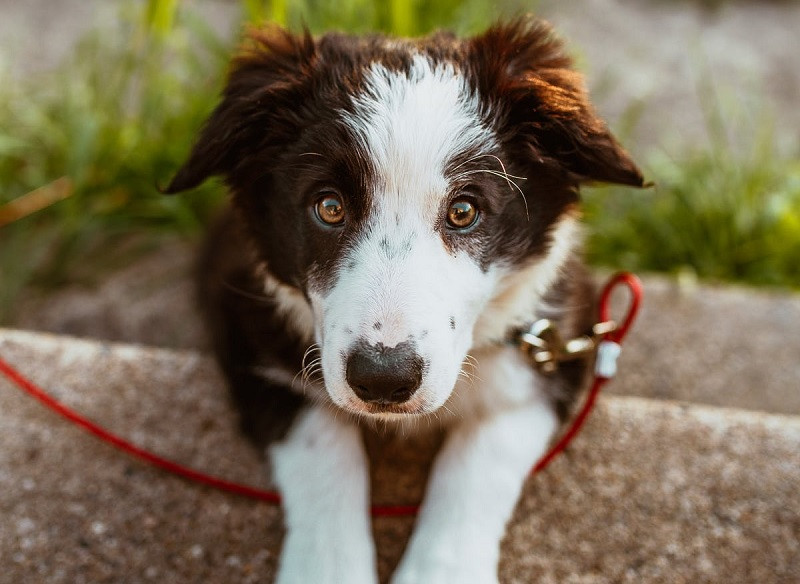
Dog phobia, also known as cynophobia, is a type of specific phobia in which the person suffers an excessively intense anxiety reaction to dogs (or to the image of a real or imaginary dog).
To diagnose a phobia, it will be necessary for a dysfunction to appear in the patient, that is, for their daily life to be affected. In the case of cynophobia, the feared stimulus is a very common animal in our society, making it very easy for the patient to encounter it and not be able to avoid it in any way. For this reason it will be necessary to carry out a psychotherapeutic intervention.
In this article We will see what dog phobia is and what techniques have been found to be most effective for its treatment..
What is dog phobia?
Dog phobia, or cynophobia, is a type of specific phobia, a disproportionate fear of a possible future threat, which generates in the individual who suffers it the need to avoid such a situation (or if he endures it, he does so with great discomfort). Within phobias we have different types, the Diagnostic Manual of the American Psychological Association (DSM) speaks of three characteristic types: agoraphobia, social phobia and specific phobia.
Thus, specific phobia is what is defined as a disproportionate, very intense fear towards a specific object or situation, which may be happening, occurring at that moment, in the present or may occur in the future, in this case becoming an anticipation. The anxiety or fear response that occurs is immediate and panic attacks may occur, characterized mainly by an increase in physiological activation.
Specific phobia is considered the most prevalent anxiety disorder in the general population., although it is also the one that generates the least problems and disabilities, since in many cases the stimuli that are feared are unlikely to be encountered or the subject avoids them. In this way, the criterion of alteration in the functionality of the person’s life, necessary for diagnosis, is rarely met. Typically, the severity of this disorder is medium or low. Another criterion that must be met to be classified as a disorder is that its duration is 6 or more months.
There are many types of specific phobias, as many as there are possible objects or situations in the world.. These, in turn, are classified into four different groups depending on whether the anxiety occurs in front of some type of animal, in front of the sight of blood, injections or wounds, in front of situations or in front of a natural or environmental environment. The phobias of each group will have a tendency to start at different ages, and will also be more characteristic of one sex or another.
In reference to animal phobia, also called zoophobia, which is the category where the fear of any type of animal is classified, it usually occurs for the first time in childhood. That is, it begins at an early age and is more prevalent in females; in other words, there are a greater number of women who present this pathology compared to men.
Thus, dog phobia will be defined as a disproportionate fear or anxiety of dogs, normally consolidating during childhood, and which may be due to a traumatic event that the affected subject experienced with a dog. Also add that there may be variations depending on the cause of cynophobia, for example, you can be afraid of all dogs in general, regardless of their characteristics or you can fear specific dogs, depending on their size, color or race.
How is dog phobia treated in therapy?
The probability of encountering the stimulus that generates this type of phobia, that is, a dog, is high in the society in which we live. In the same way, it will be difficult to predict when we may encounter one, thus making it difficult for us to avoid them. It is for these reasons that If we have a disproportionate fear of dogs, cynophobia, our functionality will be altered, impacting our daily lives. and therefore with a high probability we will need specific treatment.
Like any phobia, cynophobia presents a genetic predisposition for its development, this means that if the parents have a phobia of animals, it will be more likely that their children will also have it. Although it is not the only cause, it will also affect the experiences that the subject has had, for example, if they have had a bad experience with a dog or if they have witnessed an unpleasant situation for another person.
Thus, given the characteristics of this type of phobia, the fact that the stimulus is specific and that it is possible to know the cause, The intervention procedure that we will carry out will be similar to that applied for the treatment of specific phobias in general..
1. Exposure treatment
The treatment that has been found to be most effective for the majority of specific phobias is in vivo exposure to the phobic stimulus.. In this specific case, an exposure to the stimulus will be carried out, since through this technique the opportunity is given to visualize the feared animal in a controlled and safe situation and thus be able to break the association between the dog and the fear or anxiety that it generates, that is, reverse the classical conditioning that had been generated by the traumatic experience experienced by the patient.
Explained in more detail, the live exhibition consists of presenting, in this case, the dog’s stimulus in a more or less gradual way (following a curve of increasing intensity or difficulty) and maintain its presence so that the subject can confront it, and thus ensure that the anxiety and fear that appear in front of dogs decreases and ends up disappearing. Since this type of technique generates high anxiety so that it is not unbearable for the subject and they can cope with it better, it is recommended that during the first exposure sessions the dog’s movement be limited, so that the patient feels a little safer. .

This procedure can be done in different sessions, although it has also been considered and good results have been obtained to treat only with a session of up to 3 hours. To carry out this intervention, it is essential that the subject only has a monosymptomatic phobia, that is, only to one stimulus, that the subject is motivated and that having the phobia does not cause benefits or that its disappearance does not generate negative consequences.
Likewise, as we already pointed out, directly exposing oneself to the feared stimulus produces great anxiety and can generate great rejection in the subject. For this reason, other similar techniques have been tested and are also obtaining positive results. These strategies consist of making an exhibition through virtual or augmented realitywhich refers to using a simulator to create the sensation in the individual that a dog is in front of them.
Despite generating favorable results, being better accepted by individuals and allowing greater control of the situation, it is not equivalent and does not completely replace live exposure and we must always end up presenting the stimulus directly.
2. Psychoeducation
Although, as we have already said, in vivo exposure is the most effective treatment for this disorder, other strategies have also been used. Along with exposing yourself to the stimulus, it is also recommended to carry out a psychoeducation phase. This consists of provide information about the feared stimulus, in this case dogs, in order to correct and modify erroneous, unrealistic beliefs that the patient has.
Likewise, it may also be beneficial and necessary to teach and train them in skills to know how to better deal with or deal with the animal; for example, what is the best way to approach or touch a dog.
3. Participant modeling
It has also been seen that applying the participant modeling technique combined with live exposure can obtain positive resultsand is recommended when it is necessary to teach management skills to the patient.
Participant modeling is characterized as a process where a model, usually the therapist, performs and guides the patient to know how to act in the best way in the feared situation. Above all, the introduction of this technique has been beneficial in achieving better results in interventions carried out on children.
4. Cognitive-behavioral therapy
In reference to other techniques used and that have also shown a certain degree of effectiveness are those used in cognitive-behavioral therapiesthus introducing strategies such as anxiety management, which can be done for example through relaxation or the use of more cognitive techniques such as cognitive restructuring, which consists of modifying unrealistic beliefs.
Finally, it should be noted that the use of psychotropic drugs is not considered effective for treating specific phobias; only in some particular cases can they be used as a complement in the first exposure sessions, but they will never be the first treatment option, taking them only during a short period of time and then remove it.








